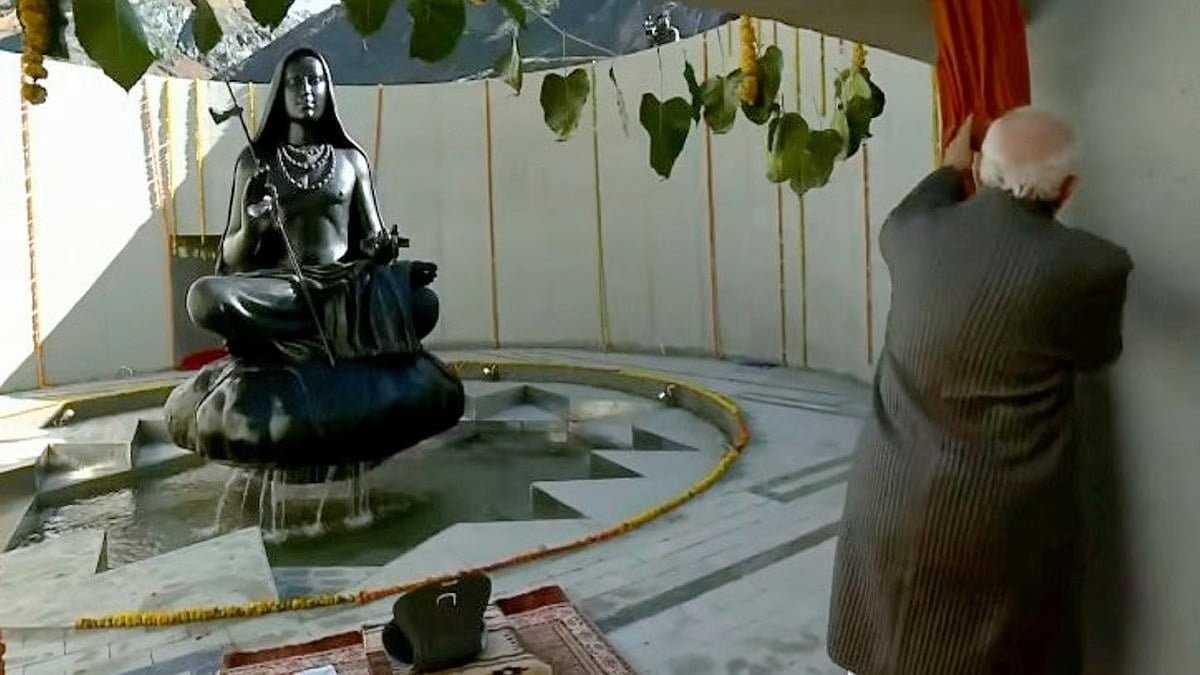The four Shankaracharyas, who head four major Hindu mutts (monastries) and are known to stay away from limelight, are in the news.
The shankaracharyas said they wouldn’t be attending the ‘Pran Pratishtha’ (consecration) event of Lord Ram’s idol on January 22 in Ayodhya. The ‘Pran Pratistha’ even would mark the inauguration of the Ram temple in Ayodhya.
Three of the four Shankaracharyas clarified that they were neither against the January 22 Ram Mandir ceremony in Ayodhya nor were they opposed to Prime Minister Narendra Modi. They said the ‘consecration ceremony was not being carried out as per the Hindu scriptures.
But who are the Shankaracharyas, and what is their significance in Hinduism?
WHO ARE THE SHANKARACHARYAS?
Just like the Supreme Court of India is the final authority when it comes to interpreting the Constitution, the Shankaracharyas are the “supreme authority” in Hinduism and for interpreting Hindu scriptures.
The shankaracharyas or pontiffs head the four principal monasteries or mutts that were established by the eighth-century Hindu saint Adi Shankara. They are based in Uttarakhand, Odisha, Karnataka and Gujarat.
Each mutt, called peetha or pitha in Sanskrit, was tasked to serve as the custodian of one Veda each and keep alive Vedic literature.
Govardhan Math in Puri is the custodian of the Rig Veda, while the Dwarka Sharada Peetham in Gujarat is responsible for the Sam Veda. Likewise, the Sringeri Sharada Peetham in Karnataka is responsible for the Yajur Veda and Jyotir Math in Uttarakhand’s Joshimath for the Atharva Veda.
All the peethas are situated in the four cardinal directions and are amongst the most-revered pilgrimages in India.
To better understand the importance of the Shankaracharyas, it is essential to know about Adi Shankara and how he revived the Sanatan or Hindu dharma.
WHO WAS ADI SHANKARA?
The title “Shankaracharya”, in fact, is derived from Adi Shankara, a Vedic scholar credited with reforming and reviving Hinduism during a time when Buddhists and Jains wielded influence.
Adi Shankara was born in Kaldi village of Kerala in the month of Vaishakha in 788 CE (this, however, has been disputed by some scholars). Also known as Jagadguru, Shankara had a short life (it is believed he died when he was just 32) but he had a big impact on Hindu religion.
Revered as an avatar of Lord Shiva, it is believed that he mastered the Vedas when he was just 16. At a very young age, Shankara started criss-crossing the length and breadth of India to spread his commentaries on Brahama Sutras, Upanishads and the Bhagavad Gita amid a rise in Jainism and Buddhism.

Shankara had only one motive — to propagate his philosophy of non-duality, or Advaita. According to his philosophy, God and humans are not two and the material world is an “illusion”.
In simple terms, he wanted to proclaim to the world that it is unity that underlines the apparent diversity.
Basically, his philosophy rejects matters relating to caste and law codes, etc. Shankara wanted to unify the different sects and their rituals of Hinduism.
Adi Shankara travelled extensively to the four corners of India and established four monasteries in four cardinal directions to take forward his teachings and philosophy.
WHAT ROLE DO SHANKARACHARYAS PLAY?
The four pontiffs serve as the torchbearers of Adi Shankara’s legacy and play a crucial role in the preservation and interpretation of sacred Hindu scriptures. They serve as mediators between different schools of thought within Hinduism.
The Shankaracharyas also oversee the Dashanami Sampradaya, an order of renunciates (those who have renounced the secular way of life).
Presently, Swami Nishchalanand Saraswati is the Shankaracharya of Govardhan math, Avimukteshwaranand Saraswati is the Shankaracharya of Jyotir math, Swami Bharati Teerth is the Shankaracharya of Shringeri Peeth and Swami Sadananda Sarswati is the Shankaracharya of Dwarka Peeth.
FOUR PEETHAS AREN’T THE FOUR DHAMS
The peethas draw thousands of devotees every year. However, they should not be confused with the four dhams.
The four dhams, known as Char Dham, were also established by Adi Shankara. The four shams are at Badrinath, Dwarka, Puri and Rameswaram.
The peethas are basically associated with the preservation and propagation of Hindu philosophy.
